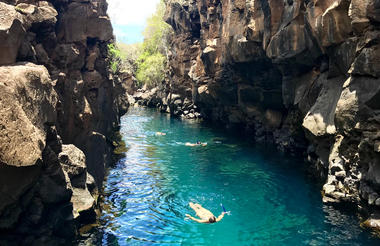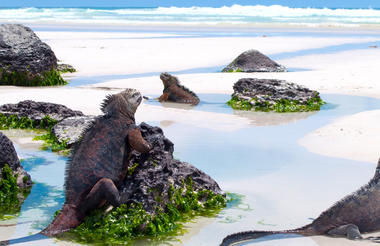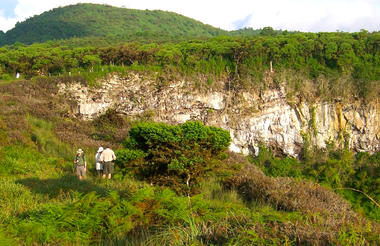Quito, the capital of Ecuador, lies on the slopes of the Andes’ mighty Pichincha volcano in the Guayllabamba river basin. The city’s Old Town is its main attraction - one of the most well preserved in Latin America and the first-ever UNESCO heritage site. Wander among ancient, colourful streets; pop into glorious historic churches; or spend an afternoon browsing the vibrant Mercado (markets) and learning about the unique, traditional Ecuadorian Sierra culture. Other bucket list items in Quito include a visit to the impressive Casa Museo Guayasamín; the Museo de la Presidencia which provides insight into Ecuador’s history; and a climb up the iconic towers of the Basilica. Numerous gorgeous public parks and a thriving and exciting culinary scene complete the package.

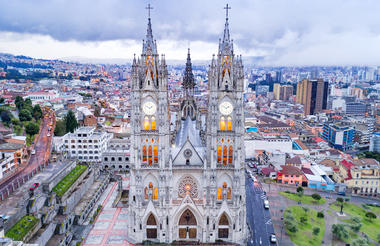
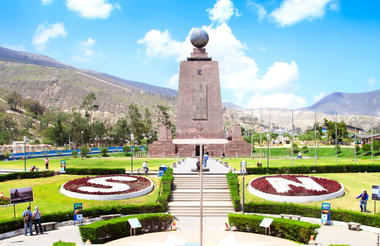
Boasting a dramatic landscape of soaring mountain peaks, numerous volcanoes, and exuberant cloud forests are the Northern Andes, a long, narrow plateau that looms over Ecuador's western region. Visitors to the area can lose themselves to the wide variety of things to do on the mountain slopes ranging from thrill-seeking outdoor activities to fascinating cultural experiences. Highlights include a scenic hike and canopy tour along the verdant landscape of Mindo Cloud Forest and a stroll along the cobblestone streets of the Old Town Quito to view stunning colonial architecture. Don't miss a visit to the small town of Otavalo, home to the tremendously popular Otavalo Market, reputed to be the biggest market for traditional jewellery, textiles and crafts in South America.



As previously described



San Cristóbal is the easternmost island in the Galapagos archipelago as well as the most populated. Famous for its natural attractions, the island also boasts some wonderful shopping and dining opportunities as well as a local airport. Take a break from snorkeling and hiking to enjoy the best Ecuadorian cuisine, or admire some of the exquisite artwork and designs at local galleries and markets. Must-see attractions include the Galapaguera Tortoise Reserve; the Interpretation Center (which provides important background information on the Galapagos); and Puerto Grande, a protected cove on the north-western side of the island boasting a magnificent white sandy beach - ideal for a peaceful walk, swim or photography sesssion.



Despite its small size, North Seymour Island, in the Galapagos archipelago, is certainly worth a visit for its astonishing abundance of wildlife. Visitors to the island are typically treated to the sight of sea lions riding waves all the way into shore, marine iguanas basking in the sun, and flocks of pelicans and swallow tailed gulls feeding just off the coast. The island is also renowned as a natural haven for one of the most sought after residents in the Galapagos Islands, the Blue-Footed Boobie. During mating season, the island is an ideal place to witness the intriguing mating rituals for which these birds are famous. With its extraordinary profusion of wildlife and close proximity to Santa Cruz, North Seymour island makes an ideal destination for an adventurous day tour.
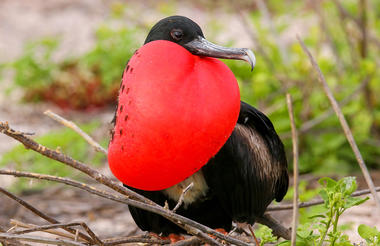


Located just off the east coast of the Galapagos' Santa Cruz Island, South Plaza is an extraordinary world of natural wonder. Uninhabited by humans, the island is home to a plethora of plant and animal life. Carpetweed paints bright scarlet and violet over landscape in the dry season, turning bright green in winter, along with several fascinating colour-changing cacti. This is the only place on earth where Galapagos hybrid iguanas can be seen. Visitors will also spot land iguanas, marine iguanas, sea lions, Sally Lightfoot Crabs, and an impressive number of several different seabird species. Take the one-hour boat trip from Santa Cruz, and then the guided one kilometre walk up to the ‘Wailing Wall’, where sea lions and birds celebrate life in an explosion of sound and colour. The waters just offshore also offer phenomenal snorkeling opportunities.



With its dramatic red sand beaches and rich green vegetation, Rabida Island is located to the south of Santiago Island in the remarkable Galapagos archipelago. The geology of Isla Rabida sets it apart from the other Galapagos Islands, as it consists primarily of spatter-cone volcanic lava and eroded hills in extraordinary shades of red and brown. The island is also known for its excellent swimming and snorkeling opportunities where you can witness a remarkable diversity of marine life including green turtles, seals, dolphins, manta rays, sharks and tropical fish. Visitors can explore a popular walking trail that leads to a saltwater lagoon where you'll find large flocks of flamingos and white cheeked pintail ducks. This trail then continues towards the summit of the island’s volcano which provides awe-inspiring views of this exquisite island full of astonishing natural wonders.

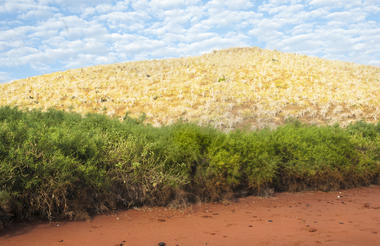

As one of the world’s foremost destinations for wildlife-viewing, this volcanic islet in the Galápagos Islands group makes an ideal stomping ground for avid nature enthusiasts. Charles Darwin was famously inspired to write his seminal work, ‘The Origin of Species’, after witnessing the veritable treasure trove of natural wonders exhibited on this extraordinary archipelago. Darwin was so intrigued by the unique landscapes, colourful rock formations and exotic wildlife of these islands that he named one of its most unusual islets after his close friend and fellow naturist, Sir Bartholomew James Sulivan. Today, Bartholomew Island is no less fascinating that is was in 1835 when Darwin first arrived. Visitors typically swim and snorkel around the iconic Pinnacle Rock where they are treated to an impressive natural world of penguins, marine turtles, white-tipped reef sharks, and other marine creatures, many of which are found nowhere else on earth.



Resting approximately 25 km northeast of Santa Cruz Island, in the exquisite Galapagos archipelago, the elongated shield volcano of Santiago Island, also known as San Salvador Island or James Island, is dotted with Holocene pyroclastic cones. The island’s best site is undoubtedly Puerto Egas where you will find a long, lava shoreline where eroded rock formations are home to an impressive variety of wildlife including an abundance of marine iguanas and fur seals. While geology aficionados should head to Sullivan Bay to witness its black lava flow covered with lava bubbles and tree-trunk moulds, diving enthusiasts can enjoy the renowed dive site of Cousin's Rock, a triangular rock that rises about 10 m (33 ft) out of the water and is made up of many layers of volcanic rock. Don’t miss Espumilla Beach which is fringed by a spectacular palo santo forest that shelters nesting Galápagos green turtles.



The island of Santa Cruz is home to Puerto Ayora, the largest and most developed town in the Galapagos. While many visitors use this island as merely a springboard for the more remote surrounding islands, those who dig a little deeper will discover that this island has plenty to offer. With numerous visitor sites, easily accessible beaches and remote highlands in the interior, Santa Cruz makes an excellent base for adventurous activities. The most popular attraction is undoubtedly the Charles Darwin Station which offers an impressive turtle breeding area and interesting information about the conservation of the unique biosphere of the Galapagos. Don’t miss the opportunity to swim or snorkel at one of the island’s magnificent beaches where you will find white sand and turquoise waters as well as an abundance of fascinating wildlife including: pelicans, blue-footed boobies and marine iguanas.
